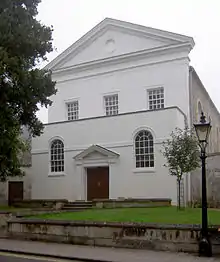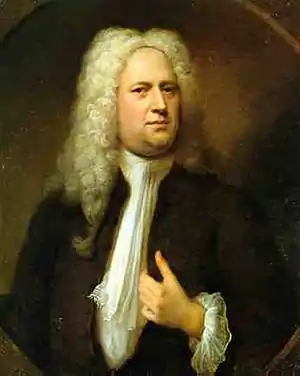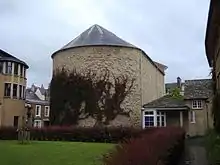Holywell Music Room
The Holywell Music Room is the city of Oxford's chamber music hall, situated on Holywell Street in the city centre, and is part of Wadham College. It is said to be the oldest purpose-built music room in Europe, and hence Britain's first concert hall.





History
The Holywell Music Room, which is part of Wadham College, Oxford, was one of the earliest purpose built concert venues in the world and the first in Europe. Prior to the advent of concert halls, recitals would happen at private aristocratic venues, royal courts, or in churches.[1] It was built in 1748, probably under the direction of William Hayes[2] and it was designed by Dr Thomas Camplin, the vice-principal of St Edmund Hall.[3] The venue was important for popularizing the music of Haydn in 18th century England. He was the most frequently performed composer during 1788–1791; at short notice he was unable to attend a planned visit to the venue while in Oxford in 1791.[4][5]
By 1836, the building was being used for purposes beyond concerts, including auctions and exhibitions. During the 1870s, the Oxford Philharmonic Society would give weekly concerns. In 1910, the building was leased by the Oxford University Musical Union. In 1959, the building was restored.[6] The building was Grade II* listed in 1954.[7][8]
Building
The building cost £1,263 and 10s, equivalent to approximately £2.5 million in 2018,[note 1] and included chandeliers that had previously been hung in Westminster Hall for Coronation of George IV and donated to Wadham College.[9] The building was funded by public subscription.[2] The auditorium seats 200,[1] includes an organ, which likely dates from the 1800s and originated in Holland.[9]
Notes
- Comparing labour costs between 1748 and 2018, £1,263 and 10s is valued at approximately £2,425,000.00 by MeasuringWorth.com
References
- Moore, Gillian (12 December 2014). "A tale of two cités: can the Philharmonie de Paris bridge the social divide?". The Guardian. Retrieved 22 March 2020.
- "Exploring Wadham's Holywell Music Room". Wadham College University of Oxford. 21 February 2017. Retrieved 22 March 2020.
- Tyack, Geoffrey (1998). Oxford: An architectural guide. Oxford University Press. pp. 187–188. ISBN 978-0-14-071045-8.
- HUGHES, ROSEMARY S (1939). "HAYDN AT OXFORD: 1773—1791" (PDF). Music and Letters. XX (3) (3): 242–249. doi:10.1093/ml/XX.3.242. Retrieved 16 January 2017.
- Mee, John H. (1911). The oldest music room in Europe : a record of eighteenth-century enterprise at Oxford. London: John Lane. pp. 133–135.
- "Holywell Music Room". Oxford Play House. Retrieved 22 March 2020.
- Historic England. "Details from listed building database (1047232)". National Heritage List for England. Retrieved 9 October 2009.
- "Holywell Music Room A Grade II* Listed Building in Oxford, Oxfordshire". British Listed Buildings. Retrieved 22 March 2020.
- Jenkins, Stephanie. "Holywell Music Room, 34 Holywell Street". Oxford History. Retrieved 22 March 2020.
External links
- Mee, John Henry (1911). The oldest music room in Europe : a record of eighteenth-century enterprise at Oxford. London: John Lane Company. Retrieved 22 March 2020.
- University of Oxford Faculty of Music
- Pindrop Performances
- Oxford Coffee Concerts
- Jack Gibbons concerts in Oxford
- Information from Daily Information
- Appeal for the extension and renovation of the Holywell Music Room